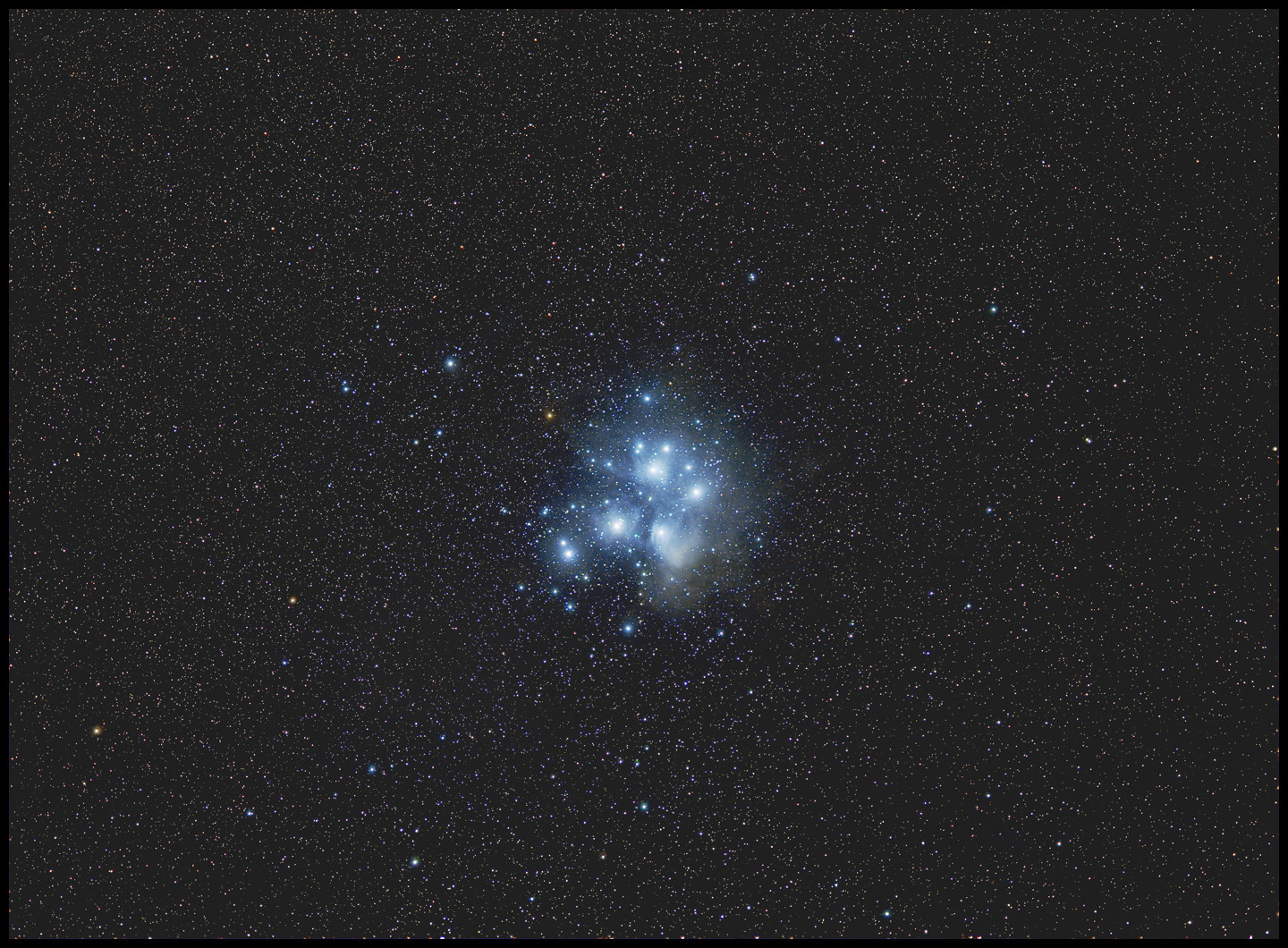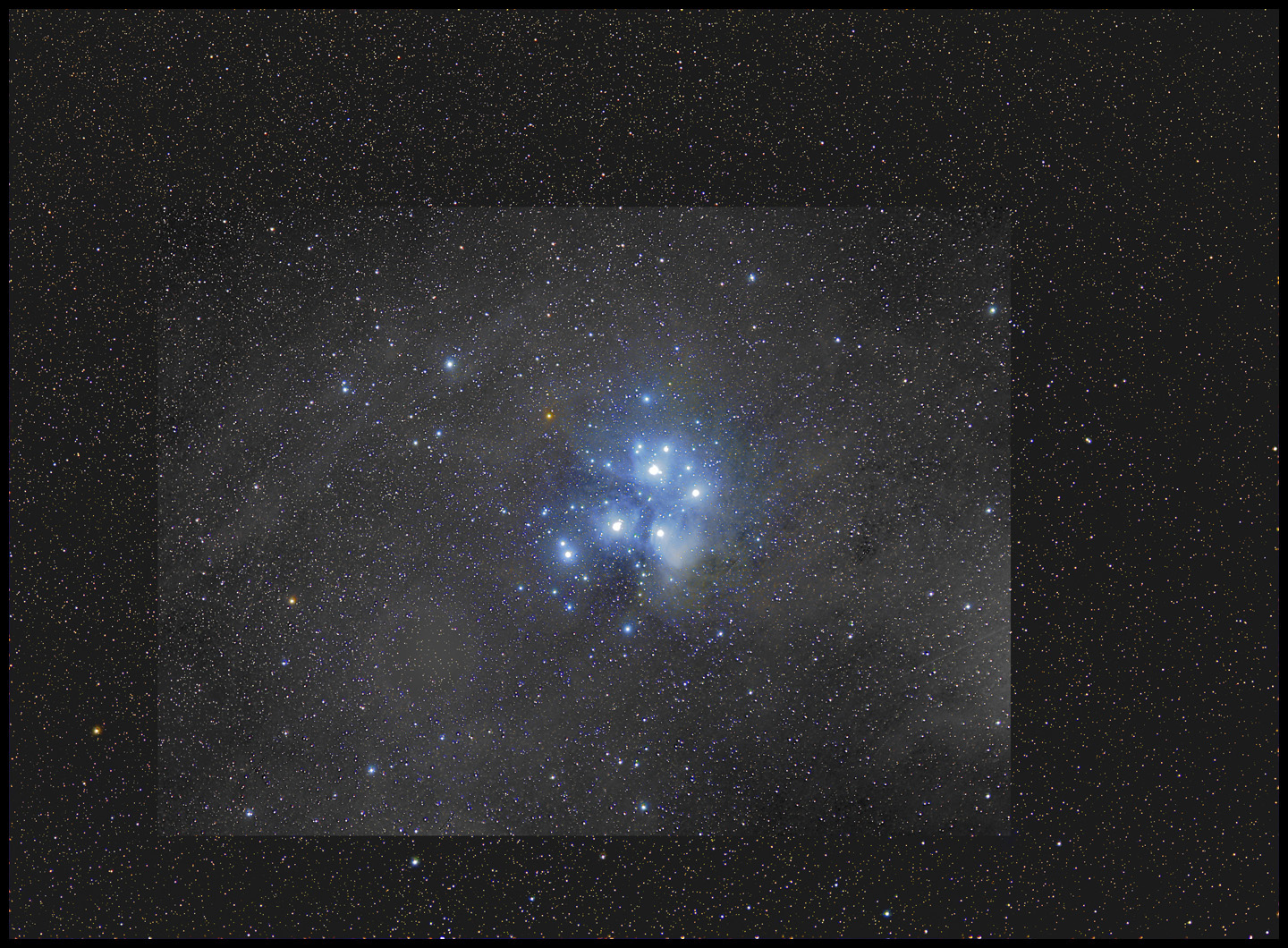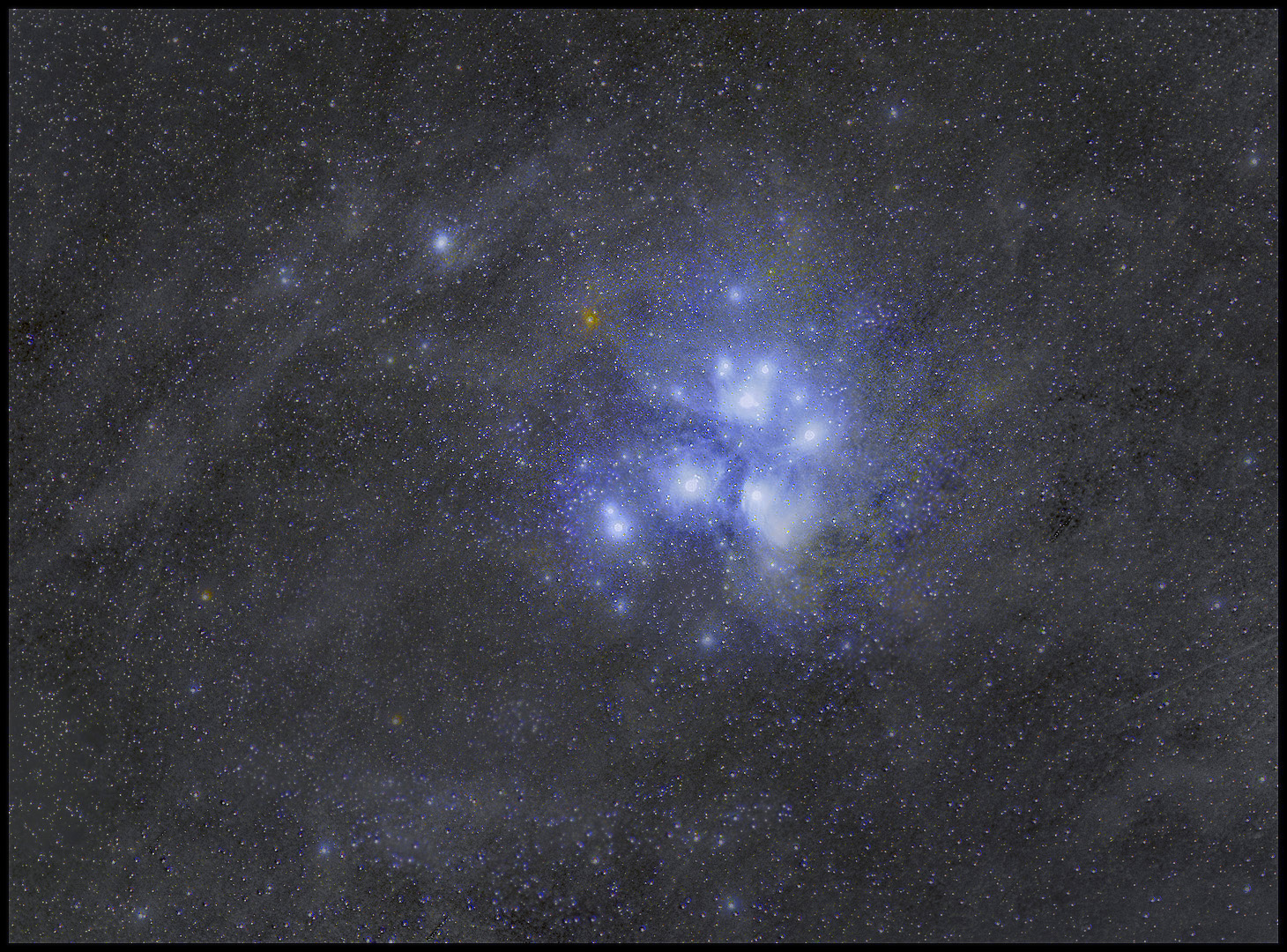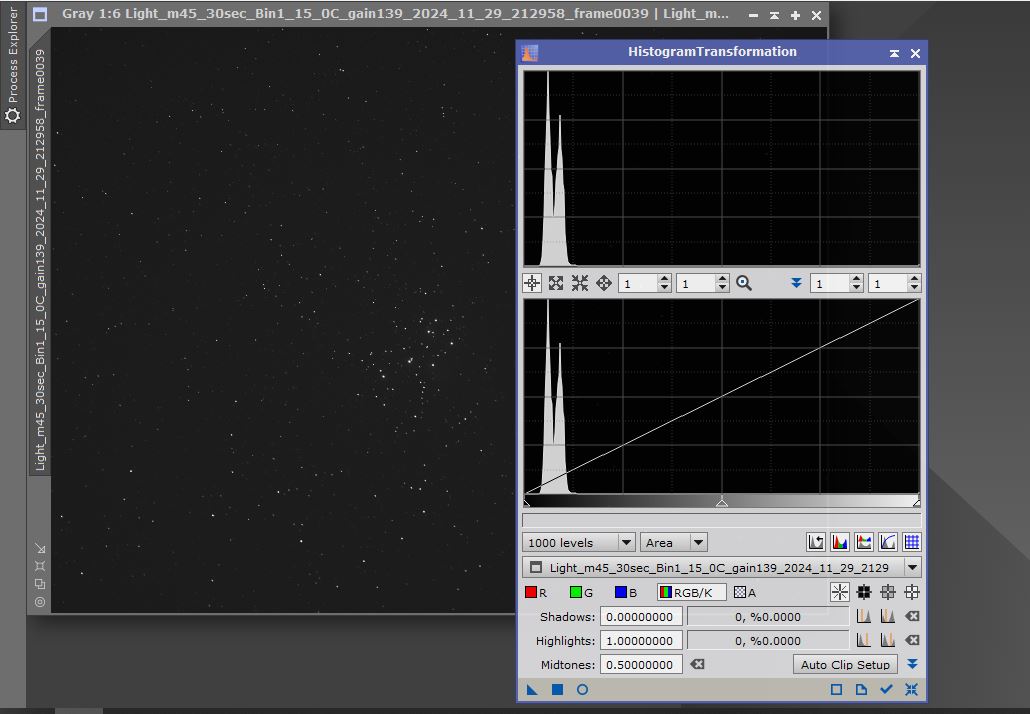The Starry Night, 265 :: home :: |
OSC anyone?
I looked at ASI533MC and 2600MC cameras, but I didn't have the budget for either or for any new OSC camera, really. So, of course, I watched Astromart for a deal. What came up right soon was a comparatively old and troubled ASI1600MC. I've been thoroughly pleased with my getting-a-little-long-in-the-tooth monochrome ASI1600MM, so this seemed a natural way to give a one shot color sensor a fair shot. The offered camera was less than half the price of used 533's, had an aftermarket Jameco fan after its OEM unit quit, and a minor smudge on the very edge of the window over the chip that might or might not matter. The price and timing were right, so as I write this, it's on the tracking platform behind the 105 Sigma up in the cul de sac collecting photons from the Pleiades and environs. Some initial notes: (1) I had to hang something on the rig to provide extra weight to pull the lens and camera westward -- this is a very light outfit. Audition lighter counterweights or devise a way to add weight more elegantly. (2) Focusing is a pain. Either come up with something like the tangent screw on the 400mm F2.8 or adopt NINA in place of ASIStudio if only for its focus-assist routines. Or maybe try a Bahtinov mask. We'll see how well just zooming in with a rapid refresh rate in bin2 did tonight. (There's always the ASIair and autofocus. One thing at a time. And if not literally one thing, then as few as possible.) I'm shooting 5s, 10s, and 30s subs in medium gain, bin1, at a sensor temperature of -15C to go with a quick set of darks I took as soon as I unboxed the camera. The air is around +1C and when I last looked the cooler was only working at 19% power. A 20AH lithium battery is driving both the mount and the camera tonight. When the weather warms and I need a ton more cooling and/or a dew strap, or when I opt to use the A-P, with guiding, I may well be in the market for a bigger battery. Tonight, I'm imaging through a ZWO UV/IR filter. A duoband filter from Svbony (SV220) will be here soon. I don't know what to expect from any of this -- it could be great or mediocre; it could be a perfectly adequate kit to work with for a good long while; it could fail miserably; it could be yet another gateway drug. By and by, I should do some side by sides with the R6 to see how things really compare. Modern digital cameras have also come a long, long way, but this should, if nothing else, have it all over the R6 for narrowband work. I'll be back with you for some first-light images after this auto-sequence completes... (Click to enlarge any of these.) -15C, bin1, ASI1600MC; 105mm F1.4 at F1.4
Impressions: (1) I didn't get anything like as much extended nebulosity as expected. (2) After BlurX, it's just killer sharp, but try not to rely on deconvolution, 'OK? (3) Those tiny pixels --half the linear dimensions of the R6's-- really help the stars and the overall sharpness of the wide-field view. (4) The image is clean. What's next: Try integrating only the 30s frames. Maybe we're averaging out the faint stuff? Yes! I think 30s at gain 139 is the short exposure to keep the stars, not 5s or 10s. Here's a stretched crop of just the 30s frames overlayed on the image above:
Tighter crop using just the 30s exposures overlayed. Without a decent flat, I really can't process the whole field this aggressively, and I didn't shoot one tonight.
So, working with the cropped, 30s data: render a starless version, work on the nebulosity, then drop the stars back into the frame. ADBE and faux-flats to get some detail back. Note to attentive viewers: do not inspect the area below and left of the Pleiades -- I played a bit fast and loose there to get rid of a dark shadow on the sensor (clean it or use flats, or why not both?):
240x30s. Starnet2, ADBE, faux-flatted, etc. in whatever order seemed apt.
That's more or less what I expected tonight. Now let's make it less like pulling teeth. Shoot flats. Use high gain. Inspect the histogram of the original files and see if 30s is just too short (not particularly, see below). Do some daylight tests to figure out what the effective ISO of the 1600MC is and adapt expectations accordingly (one source says gain 180 is roughly ISO 800, so gain 139 would be considerably less). If you're going to do this many frames, noise from high gain will not be a problem. Just the same, I might need to put it on the Mach1 and guide longer sub-exposures. I need to look back at my ASI1600MM stacks to see how I did narrowband stacks with it. And figure out NINA, which is probably worth the hassle to learn. FWIW, the histogram from a 30s subexposure:
A classic Earthly photographer might say that's taking "Expose to the left" more than a little too far. Astrophotographically speaking, that's not too bad. Still, if I could go 1 minute it might be good -- it would save a lot of time in post by cutting in half the sheer amount of data needed per unit exposure. And if the tracking is good enough, why not use 2x or 4x this exposure? Not many targets have the extreme dynamic range of the Pleiades and their attending dust.
12/02/2024: To estimate ISO values that correspond to the ASI1600MC's various gain settings, I set up the R6 and the astrocamera with the same lens, no filter, and a diffuser on the kitchen cabinet. The R6 provided an auto exposure of 1/50s at ISO 800. I took single frames with the ASI camera at gain 0, 139, and 300 (low, medium, and high in ASIStudio) at a fixed exposure. Mumble, mumble, it's just a start, but by squinting at the exposure corrections needed to center these plots on 50%, I get the following very approximate equivalences:
The medium range sounds slow, but it will get things done (see Pleiades results above). Remember that back in the day, I routinely pushed Plus-X to ISO 800 for concert photography, and "pushing" these clean digital images is much easier. Keep in mind that a stack of 100 images will have about 10 times less noise than any individual frame (and that dark frames are a thing, and even more noise reduction software is only a click away). The "low" range seems useless under the night sky, but both medium and high hav e their places. Beware that these ISO analogs may be more misleading than helpful, but there they are, for whatever they're worth. This, at least, is worth noting: the bell curves are very tight at gain 0 and very broad at gain 300 (this is at room temperature, so, again take it with more than a grain of salt). The lesson being: if you use high gain, use dark frames, too. To that end, out on the porch tonight: dark frames at 60s and at 30s, -15C, gain 300. Longer frames to come with the A-P mount in mind, and more at gain 139 for completeness's sake. This is also worth noting: the first long run of darks with the 1600MC failed. I left the camera attached via a USB3 connection but when I checked on it, the camera had disconnected and not a single frame had downloaded. There's talk out there that the camera is more stable using USB2, and with single frames that's not really the problem it would be with video. So let's try again as a USB2 device and save this issue for another occasion.
:: top :: |
© 2024, David Cortner



